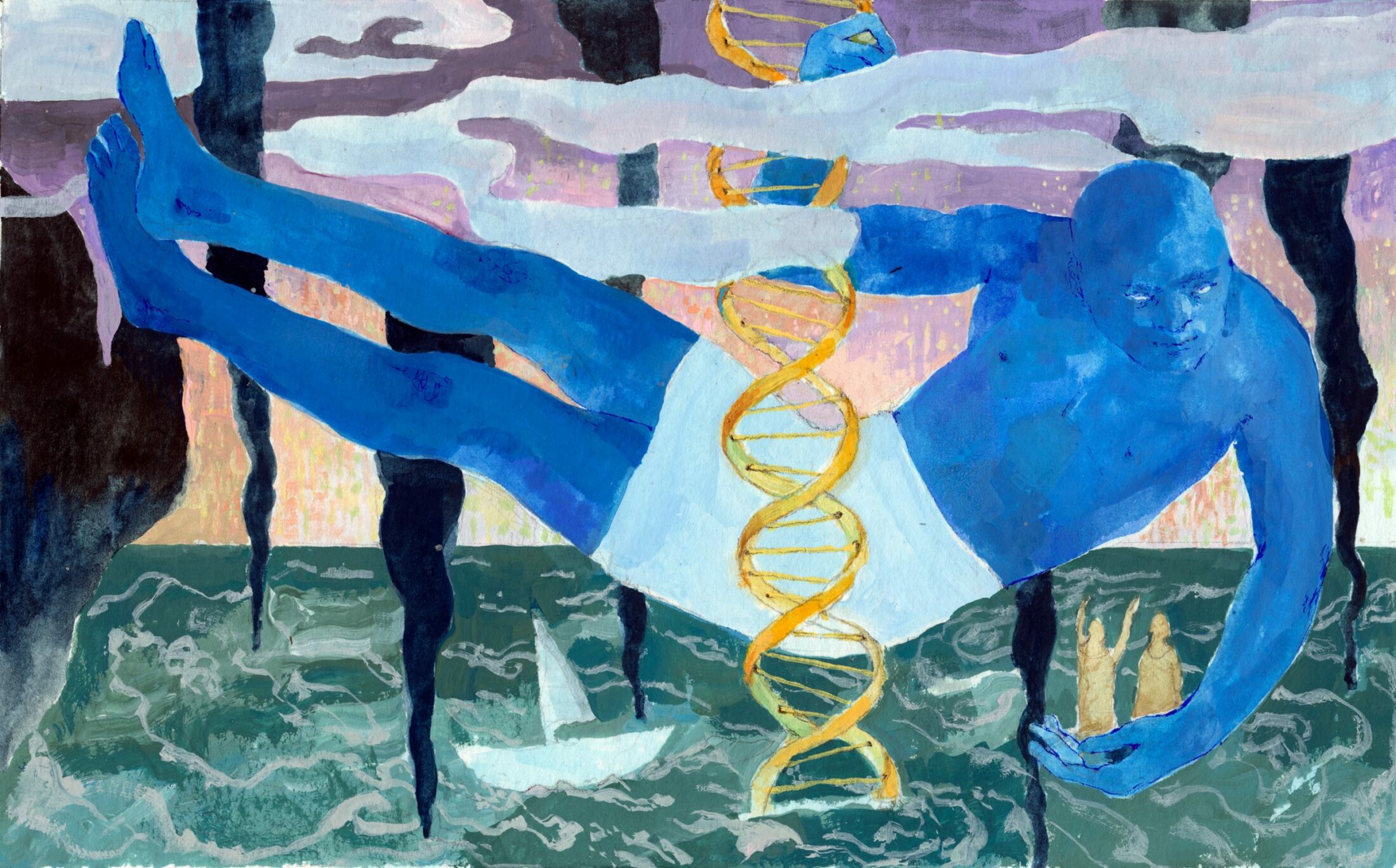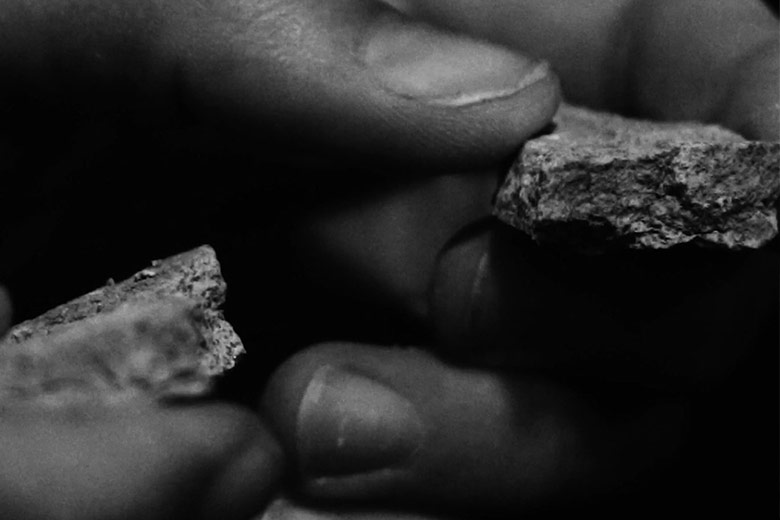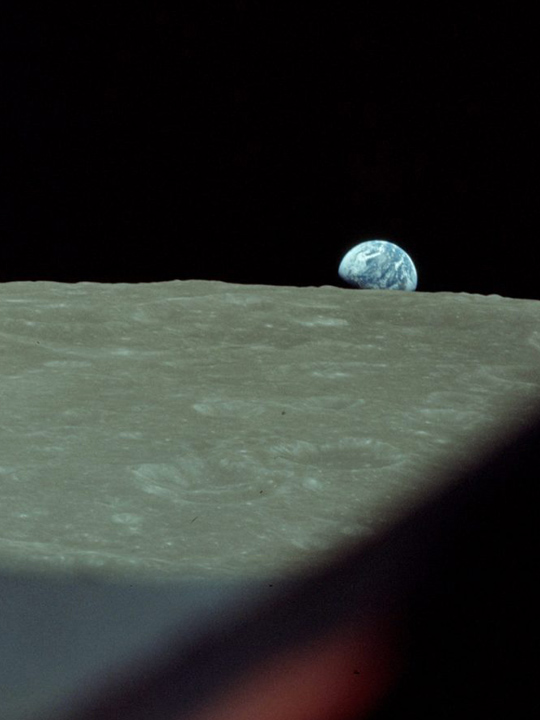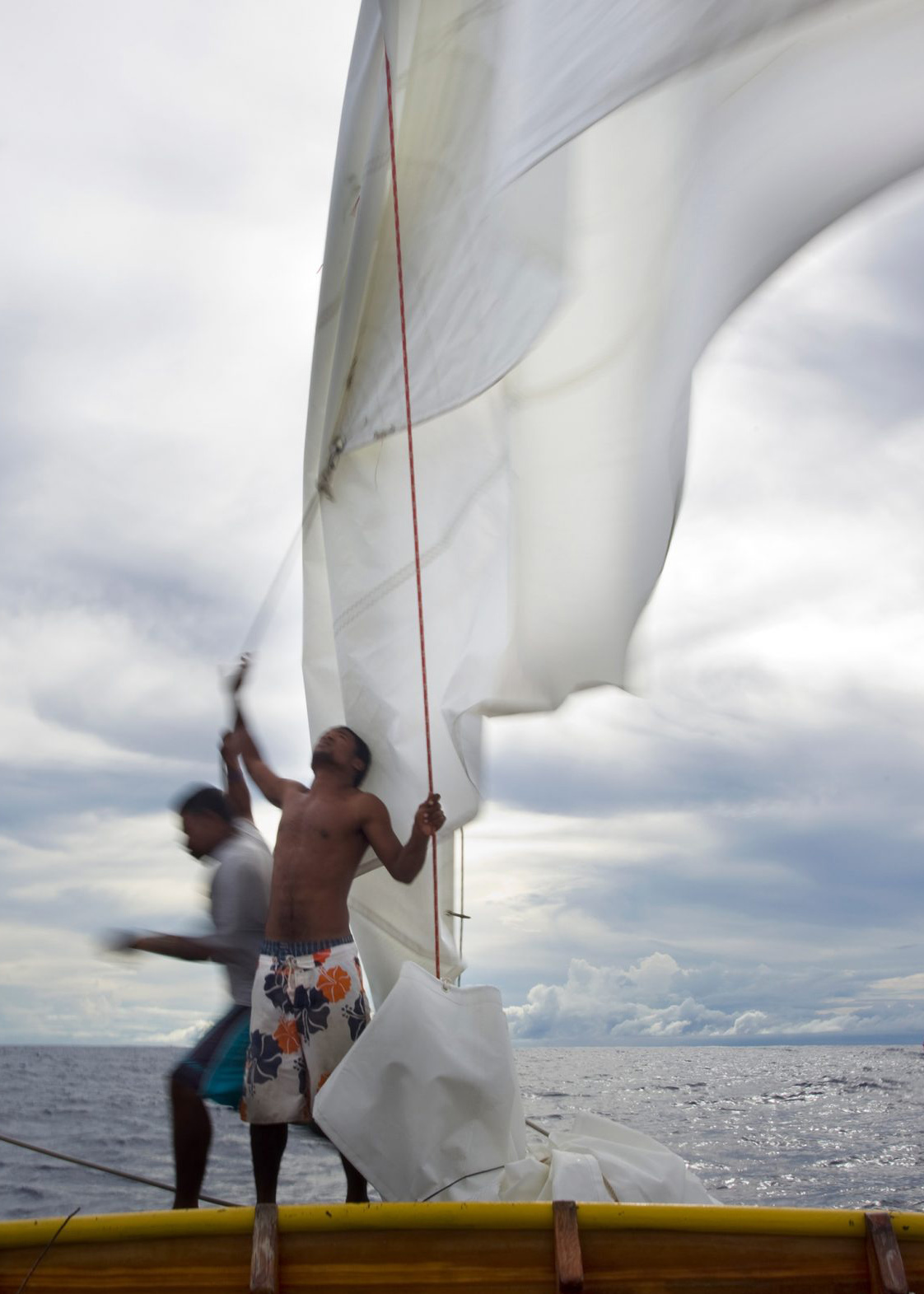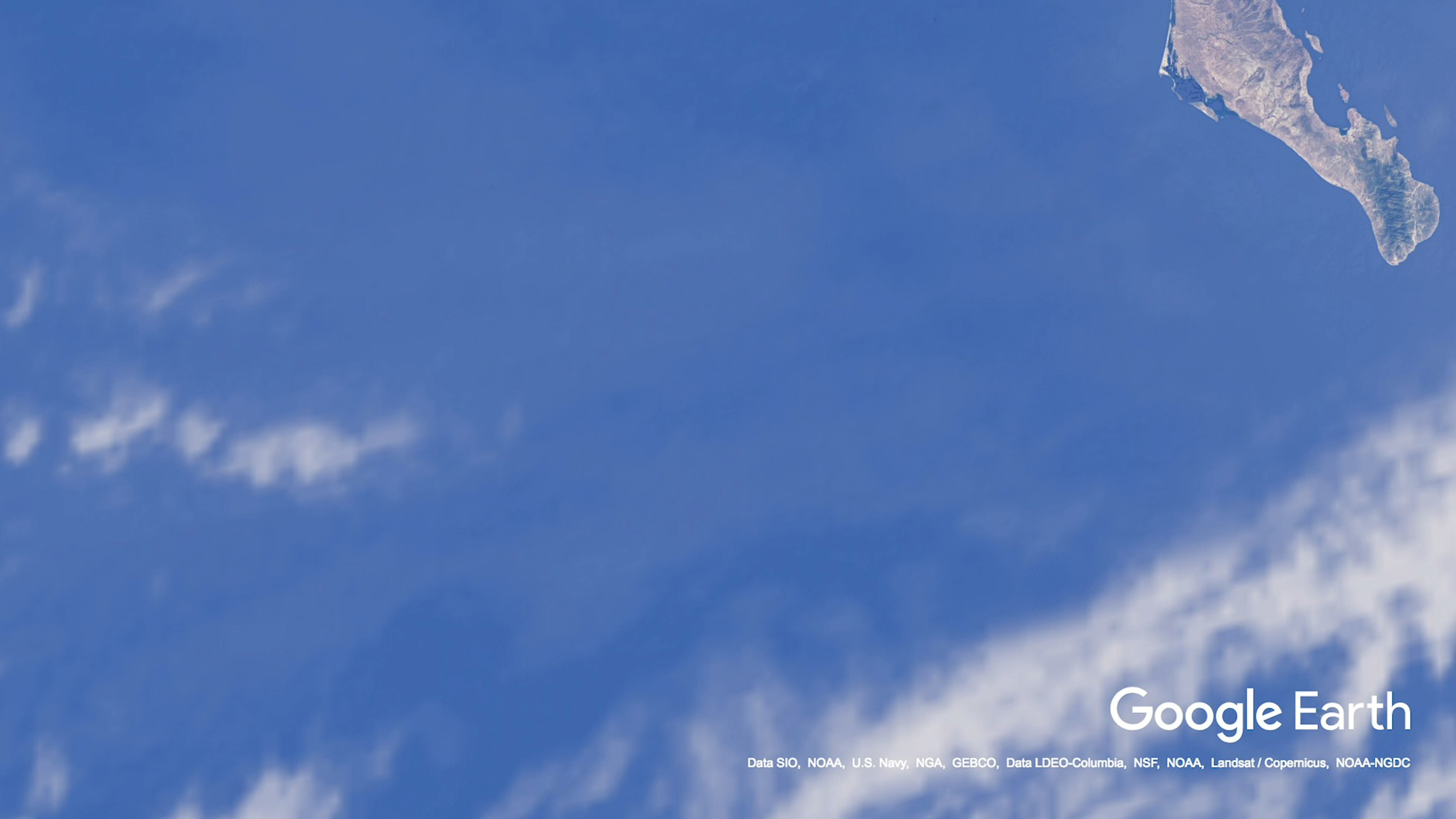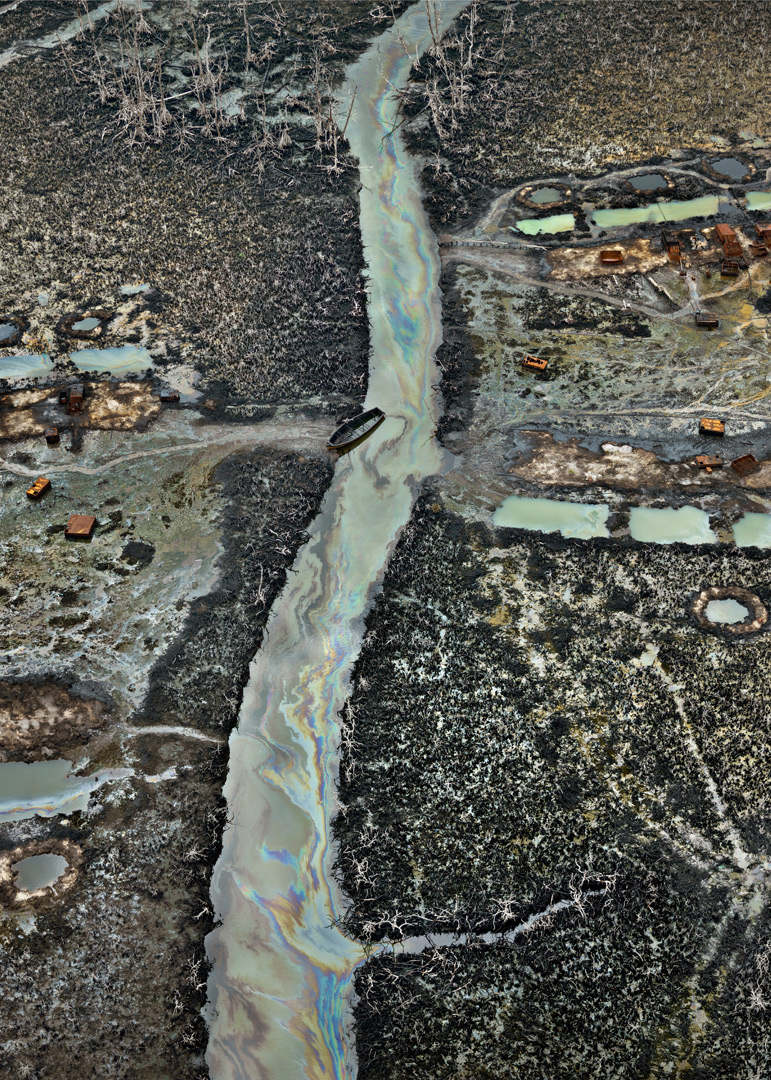Bayo Akomolafe is a writer and lecturer from western Nigeria, currently living in Chennai, India. He is author and editor of We Will Tell Our Own Story. His most recent book is These Wilds Beyond Our Fences: Letters to My Daughter on Humanity’s Search for Home.
Jia Sung is an artist and educator based in Brooklyn. She is currently an art director at Guernica, teaching artist in residence at the Museum of Chinese in America, and teaching artist at the Children’s Museum of the Arts. She has exhibited work at the RISD Museum, the Whitney Houston Biennial, and La Mama Galleria. She is currently a 2018–2019 Smack Mellon Studio Artist and recipient of the Van Lier Fellowship.
In the age of the Anthropocene and entrenched politics of whiteness, Bayo Akomolafe brings us face-to-face with our own unresolved ancestry, as it becomes more and more apparent that we are completely entwined with each other and the natural world.
A stunning invitation is in the air, urging us to rethink ourselves, our bodies, our hopes for justice, and how we respond to the politics of whiteness. In these times of painful displacements, unavertable crises, and unexpected entanglements (the Anthropocene), the logic of race and identity collides with genetic technologies and splinters into new emergent insights into how bodies come to be enfleshed—granting us hope for becoming otherwise.
The story I write here might have a neat beginning and an ending, but this story is really about the middle-ing space that gives birth to beginnings and endings. To be sure, it is about a good number of things—about race and racism, about black bodies, about the exterminations perpetrated in the name of superiority, about healing and decolonization, and about technology. And yet, it is at heart a letter about middles—not mathematical middles or the morality of balance in the way we often strive to find the golden mean between two extremes, but about how things interpenetrate each other, and how that leads us to interesting places. The middle I speak of is not halfway between two poles; it is a porousness that mocks the very idea of separation.
This is a tale about the brilliant betweenness that defeats everything, corrodes every boundary, spills through marked territory, and crosses out every confident line. The Yolngu people of Arnhem Land in northeastern Australia have a name for this “brilliance”: bir’yun (meaning “brilliance” or “shimmer”). It refers to a Yolngu aesthetic that is effected in paintings by crosshatching patterns and lines, which leave an optical impression of a shimmer. Bir’yun, more than just an artistic technique, speaks of ancestry cutting into the present, identities queered, tongues rendered unintelligible, and im/possibilities opening up. Bir’yun speaks of middles. And everything dies and begins in the middle.
When I was a child, I heard a story of beginnings from our Yoruba traditions about how the world came to be: they say there were once primal seas and raging waters below—and no land mass to counter their fury. Up above, the sky churned with the politics of a restless pantheon of Òrìshàs, non-human mythical beings who lived before humans. Olókun ruled the waters, and Olodumare—supreme above all—ruled the heavens. Between them, there was nothing. But, you see, “nothing” is never really as empty as some might think.
Obatálá, son of Olodumare—curious, restless, and uneasy with endless bliss—was inspired to create a people and the land they would rest on. With Olodumare’s blessings, he took leave of heavenly places and made his way down to the waters to begin his task. Just before he made his way, Obatálá consulted with Orunmila, Òrìshà of prophecy, who told him that he must prepare a chain of gold; gather palm nuts, with which he might hold the sand to be thrown over the waters; and obtain a sacred egg which contained a bird that would come in handy along the way. Obatálá did as instructed and secured these items. At the moment of departure, he fastened the golden chain to the sky and climbed down.
Can you take an instant to visualize this event? Imagine it for a moment: sky and swirling blue traversed by a shimmering chain that irrevocably and rudely links the heavens to the terrestrial, the divine to the mundane, the transcendent to the immanent, the infinite to the finite, nature to culture, masculine to feminine, beginnings to endings, unsettling both, re-configuring both just as well. In a sense, Obatálá’s epic adventure recreated everything.
On Obatálá’s golden chain, poised in the grand between, hangs not just a riveting account of beginnings-that-are-not-originary (or “middles”), but a figure of shocking intersections or transversal happenings—a figure that is particularly alive and much needed right now. This chain—like Obatálá’s golden chain—disturbs everything, remakes everything … rethinks everything. Its helixes weave together new practices that open up new considerations about how to ask questions related to identity and racial justice. I speak of deoxyribonucleic acid, or DNA.
DNA is the hereditary material found in humans and most organisms. Its molecular structure was discovered in 1953: two chains that wrap around each other to form a double helix shape.1 These chains, called nucleotides, hold genetic information and instructions that tell organisms how to behave, grow, eat, develop, become susceptible to disease, and heal themselves. In the years following its “discovery,” this molecule has become a site for different imaginings of what it means to be human, and our place in a larger web of mattering. Finding it was like a sentient pot of soup discovering the recipe book that created it. The closer we have looked, the more the wondrous molecule has divulged secrets about our “deep material” connections with the world around us.
DNA is frequently portrayed in popular culture (and even in scientific discourse) as something unchanging, as divine code that determines biology—how we think, eat, look, and grow. DNA as destiny. Although a thrilling consideration, it is from this bio-determinist take on DNA that some have insisted the molecule serves as a stern foundation upon which they might construct racist structures, or show why women are less well-off than men. This view attempts to reduce behavior, traits (phenotype), and everything that makes us human to changes in genetic sequence (genotype). It is a view that simplifies the complexity of life and makes way for absolutist thinking. We can now contest these claims to bio-determinism, racial superiority, and sexism by noting that the DNA molecule is not an essentialist script whose text—like some divine revelation—tells us what we really are.
DNA, like any other “discovery,” isn’t innocent or static: it isn’t just out there, awaiting the perfect lab instruments to open it up for scrutiny, pristine and disconnected from our approach. How we talk about it or the technologies we employ to measure it actively “create” it. The means and the end are intimately connected, and to change the former is to alter the latter. In this sense, the molecule most often shows up as a vector of determinism, inheriting the thinking that life’s startling complexity can ultimately be categorized, hierarchized, and reduced to a single or few sources. Over time, however, the idea of bio-determinism, though sticky and influential, has become largely discredited:2 The burgeoning influence of epigenetics has turned our attention to the environment as a critical contributor to the traits we exhibit. And feminist thinkers—reading determinism as oppression—have also tended to resist any attempt to deny the impact of culture, power, gendered privilege, and perspective on these supposedly neutral measurements of DNA and insist that the more popular iteration of the molecule (DNA as destiny) engenders racism and sexism.
A different vision of the DNA molecule is gaining ground, one which does not read the code as essentialist—a “beginning” or a source—but as an ongoing worldly practice, a meeting of bodies and environments, open to alterations. A middle. A crossroad of surprising intersections. The processes by which bodies become bodies are more complicated than simply attributing how bodies materialize to a linear causal flow from a single source (DNA) to bodily traits.3 A lot more is happening than racial or sexist categories can contain.
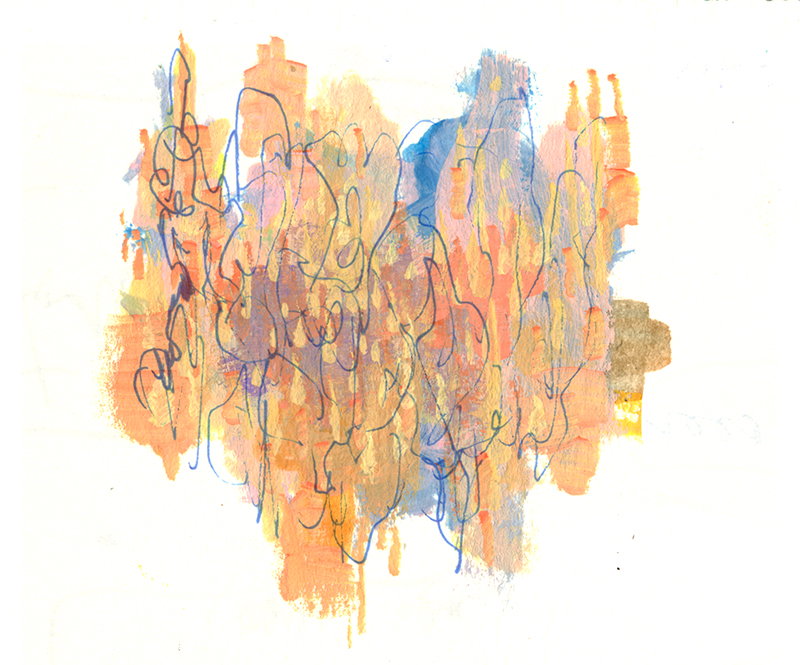
This is a tale about the brilliant betweenness that defeats everything, corrodes every boundary, spills through marked territory, and crosses out every confident line.
This is why we re-turn to DNA. Because “it” now unfolds within the Anthropocene—a time of blurred boundaries, a time of noticed confusion, when essences and static identities have become untenable. Because a curious inflection of events means Obatálá, Òrìshà of middles, now holds the molecule in his corrosive grip. With it, he whips open simple categories and established hierarchies of flow, making things spill out of their old containers. A new story soils the ground, one which confounds the neatness of racial order and racial justice. A complex portrait of how bodies come to matter is becoming definable and discernible. Like bir’yun art—composed with crosshatched lines, lending to the appreciative eye a visage of brilliance and movement—Obatálá’s chain perversely connects things to each other in unexpected ways.
We are not precisely who we thought we were. We are composite creatures, and our ancestry seems to arise from a dark zone of the living world, a group of creatures about which science, until recent decades, was ignorant. Evolution is trickier, far more complicated, than we realized. The tree of life is more tangled. Genes don’t just move vertically. They can also pass laterally across species boundaries, across wider gaps, even between different kingdoms of life, and some have come sideways into our own lineage—the primate lineage—from unsuspected, nonprimate sources.
—David Quammen4
I learned the word “Anthropocene” quite late, not in my younger days, when fiery gods and their pagan escapades were whispered about at the edges of our Christian lives, but when I put on a tie and began teaching in the university. The term means “Age of Man”; but it spells trouble, because it tells us of all the havoc we’ve caused by presuming ourselves lords over the earth, by not listening to the pollination songs of bees and the sermons of roots. Stories have consequences; ideas have bodies. And today, the idea of Man—phallic and independent—is in crisis.
Here’s what characterizes the Anthropocene: corrosive spillages and a frightening excess of broken ecological boundaries, damaged ecosystems, poisoned oceans, plastic landscapes, deforested landscapes, toxic multi-species exchanges, nuclear holocausts and mushroom clouds piercing the once-sacred demarcation between ground and heaven, rising carbon emissions, rising sea levels, oil spillages, loss of biodiversity, and proliferation of the horrific, evinced not merely in terms of genetic mutation but in our evolving analyses and capacities to notice how bodies interpenetrate other bodies, often in monstrous and unpredictable ways. What the Anthropocene refers to is the stunning impact of human activity on a now damaged planet; the very conditions of this epoch imperil both those who are blameworthy and those who are “innocent.”
But perhaps most important about this time is that the image of the human is being composted—or, we are experiencing great difficulty determining where the nonhuman stops and the human begins. Everything touches everything else in the Anthropocene—an observation that is supported by, say, current thinking about “holobionts,” assemblages of bodies within bodies within bodies, or intersecting communities that toss out notions of separable individuality. We are holobionts. We live and are lived through; we are composite beings, companion species, emerging within and among assemblages.
It is not only bodies that melt into other bodies in the Anthropocene. Time itself is shorn of its noble disinterestedness, and the past and future touch each other. In fact the Anthropocene does something queer and perverse to spacetime5—upsetting its presumed linearity and unidirectionality, making the past contemporaneous with the present, and resituating the “future” with the present and the past in the thick “now.” Time folds and melds in the Anthropocene the way taffy folds in on itself in the levers of a machine. My people, the Yoruba people, speak of circular time, slushy time, or time that collapses on itself. There are no arrows of time that fly forwards in Yoruba indigenous imagination; none of the incessant tick-tocking that has fuelled progress, that has become the soundtrack of our busy, delimited lives.
Indeed, it has been said that the Anthropocene is some sort of time travel—a sinful glimpse of the present from the vantage point of the deep future (“sinful” in that it upsets the supposed order of things). It is almost as if we are looking “back” at ourselves from the devastation of a toxic post-human world, trying to understand our age. What we see from this vantage point is allowing us to tell new stories about everything.
That’s why Obatálá is also the Òrìshà of the Anthropocene. Today, he is silhouetted against a wounded sky sewn with the rising plumes of smoke and dust, just above waters poisoned by oil and plastic and fed with the bodies of black slaves who drowned as ships carried their families to dehumanizing fields of labor. He hangs in the middle, redefining everything that precedes and succeeds. In revealing him as the deity of the Anthropocene, we notice another aspect of Obatálá. Later in the story, we learn that—after establishing the first settlement and populating it with humans that he himself creates from the dirt—Obatálá gets careless and gets drunk on palm wine. Tragically, in this state of stupor, he creates more people with broken limbs, bent-over backs, blind eyes, and bent bodies. He proliferates monstrous deviations from his original models, but then calls these his “special children,” loving them no less. By embracing the monstrous, the occluded, the forgotten, the queer, the disenchanted, and the displaced, not as a gesture of pity or compassion but as an act of acknowledgment, Obatálá foregrounds the strange—and calls them by a familiar name. He wields his shimmering chain today, showing hospitality to the monstrous—where we must now go to bring forward a different vision of race.
The future is necessarily monstrous: the figure of the future, that is, that which can only be surprising, that for which we are not prepared, you see, is heralded by species of monsters.
—Jacques Derrida6
Monsters are admittedly horrific entities. But monsters did not sprout autonomous of context or history; they have always been in dynamic interaction with the “city” that exiles them to the wilderness. This is why monstrosity can serve as a cultural means to examine ourselves. To meet ourselves as if for the first time.
And, perhaps, there could be no better time to confront ourselves than now, in these times charged with racism and extermination.
I read monsters as cultural technology—as mythic figures that have always been intimately entwined with human becomings. From a time past remembering, we’ve needed monsters to define ourselves, to teach our children what not to do, to sound warnings about the future, to define the territorial boundaries of our habitats (and therefore carve out the wilderness), and to dream about the impossible. Indeed, monsters play a crucial social role: they challenge our addictions to particular forms and disturb the familiar. Their unusual appearances and queer bodies have long been employed as warnings of divine wrath to come, or something gruesome and perverse happening behind the scenes. In the sense that monsters cut through the parallelity of our lives, upsetting the business of the hour … astonishing us and opening up new considerations that were previously unavailable, they are transversal disruptions of order. They are playful reconfigurations of flesh and therefore embodiments of the radical openness of the real. Monsters teach us about the otherwise.
The emerging picture is that we are truly monstrous, composite all the way down, and that if we were to meet the meaty dimensions of our bodies, we would be frightened by just how unwieldy identities are. What we are learning about material embodiment is that to a certain degree we really are at a loss for words when it comes to making affirmative statements about our core identities: where we come from, where we belong, and what makes us, us.
Monstrosity can serve as a cultural means to examine ourselves. To meet ourselves as if for the first time.
The idea of race as a basis for human identity has a rich and troubled history, often dated back to the early seventeenth century when English colonists established Jamestown in the New World, hoping to happen upon gold but settling for tobacco and cotton when the prospects of finding the former began to dim. I wish there were space and time to follow the meandering paths carved out by this history, allowing us to notice that what we think of now as “natural” prejudices against colored people may not even have been present in 1607; and that there were Africans living in the “New World” as early as 1619 who were accepted as members of the turbulent colonies, some of whom had servants of their own, even European servants. There were marriages between “blacks” and “whites” that were not considered “intermarriages,” and there doesn’t seem to be any evidence that Africans were discriminated against for their physical appearance. In fact, in one of the New World colonies, Africans were deemed more “civilized” than the Irish.
After the armed rebellion of Nathaniel Bacon in 1676 (the agitation against the repressive policies and rule of Governor Sir William Berkeley of Virginia), the rulers of the colony began to institute laws that discriminated between Africans and their European siblings in the same socioeconomic class. These laws restricted Africans’ mobility, rescinded their claims to property, allowed them to be classified as property, and led to the importation of more Africans directly from Africa in the transatlantic slave trade.
In time, physical appearance (colorism) and other phenotypic features, like musculature, would become symbols of social status, and differences between populations would be exaggerated in order to justify the dehumanization of a “lower” class of people for economic motivations. Black blood, black brains, and black bodies became reified in this new atmosphere—and the emergent technoscientific enterprise, entangled with political-patriarchal-religious-economic interests (as is still the case today), began to write reports and produce knowledge that reinforced these increasingly white epistemologies of newfound supremacy. Eighteenth-century American physician Samuel Morton wrote extensively on the subject of craniometry, establishing a classificatory system that ranked Caucasian brains over African brains and Native American brains. Brain size was indicative of intellectual capacity, and the eventual demotion of non-Caucasian brains concretized white bodies as emblems of rational superiority: a stratagem for ensuring permanence and the longevity of the embryonic concept of whiteness.
In short, the fabric of the growing English colonies and, eventually, their American counterparts (post-1776), comprised of the emerging institutions and governance structures, was stitched with this superintending desire and intergenerational longing to maintain control over the dissident bodies that agitated against the ruling elite. The politics of racial segregation harks back to these twilight moments.
But still I wonder: why does racism exist?
Why were black bodies in West Africa sold to seafaring traders from America? Why were they bought? Did the whip-bearer not see the humanity in the eyes of those whose backs he embroidered with scars and death? Did their stories not bleed out to query his fury? Did the Muselmänner prisoners in the Nazi concentration camps, standing gaunt and stripped of humanity, know the fleeting intervention of a passing smile—an acknowledging glance? What are the conditions making it possible for American immigration officials—themselves fathers and mothers—to participate in the incarceration of migrant children stripped away from their families at US borders? What stirred in spacetime or squirmed in gut-microbial-courtrooms when that white Starbucks store employee called the Philadelphia police on two black men, who had committed no crime except to delay their orders? Or when that white Subway employee decided that the Dobson family—black parents and their four black children on their way home from their grandmother’s birthday party—were about to rob her restaurant? Or when that gentleman called the police because a black woman using a public pool was “suspicious”? Or when those presumably well-meaning police officers gunned down a young black man in his own backyard as he clutched his phone?
Do we call these disturbing behaviors “evil”? Is this some DNA issue? Do we chalk it up to “hate,” “ignorance,” “wickedness” (as some religious folk back home might call it), or some attitudinal issue—this sticky and bewildering refusal to grant other-than-white bodies their humanity? What about my melanin-rich body makes some folks pucker up or wilt away in stereotypic fright?
Who will love my children? Who will love my stories?
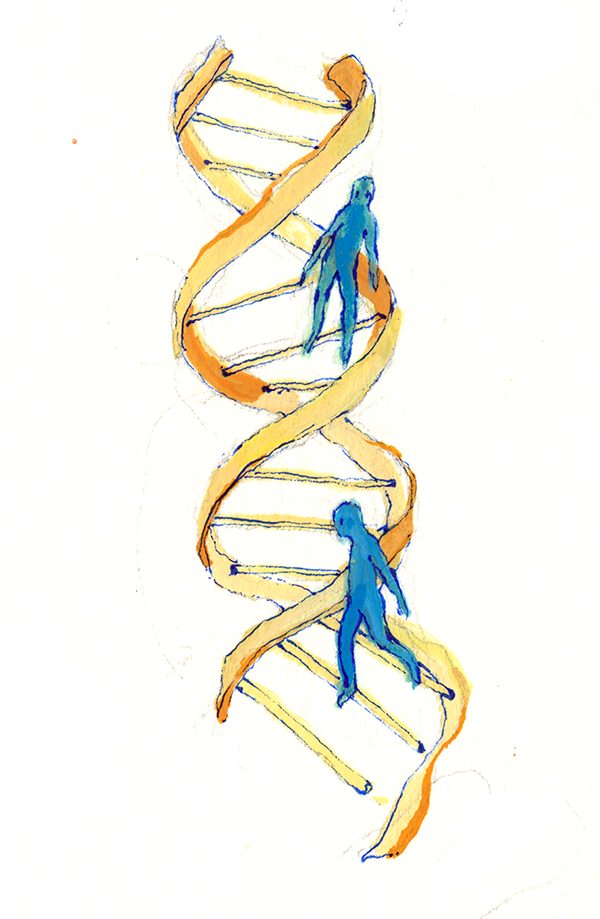
The stark reality is that in our global order of intra-connected nation-states, black and brown bodies still occupy lower rungs on the ladder of humanity.
Growing up in Nigeria, I learned a simple explanation from men of God, prancing about on their altars. They said that the “black man” was cursed—because when the flood waters went down, Noah came out with his three sons, Ham, Shem, and Japheth. Japheth was “fair,” Shem was “dusky,” and Ham was the black one—the father of black people. And Ham was cursed to be lesser than his two brothers—which is the reason why Africans are superstitious, bestial, backward, and desirous of the salvific intervention of the Christ. So I learned that my body was cursed by an ancient patriarch and that I had to bear the grievous weight of this pronouncement through my days—or submit it to be washed by the blood of the lamb. I confess that I truly believed these things at the time. In the absence of other conversations about the challenges we faced as a people, it made sense to look at poverty and decide that our misfortune was due to an ingrained incapability to rise to the lofty heights of European civilization; it made sense to think of ourselves as needing to catch up with the West; it made sense for pastors to become immensely popular motivational speakers by peddling success secrets to a populace that had been disconnected from their own abundance. So even though my Nigerian education in matters of race and racism wasn’t as nuanced or as immediate as an African-American’s, I struggled with feelings of inadequacy and imagined white bodies as uniquely superior to ours.
Thankfully, the idea of an original sin of blackness lost its mesmeric powers over me long ago, along with a literalist interpretation of the biblical text. In its place, a yearning for a politics of equality was kindled. To my knowledge, there were no racial justice groups in my country, but I became very attracted to Pan-Africanist ideals that told a very different story about my charcoal-black body and low-hanging lips. I learned of my people’s struggle for independence, of the release of Nelson Mandela and the end of apartheid in South Africa, and of the stirring sermon of a black American preacher whose dreams for a post-racial America were the script of hope for a haunted nation. I even wrote a book advocating for equality, celebrating invisibilized African philosophies, and denouncing the faux universalism of white epistemologies. When Illinois Senate candidate Barack Obama gave his celebrated speech at the 2004 DNC Convention, I told a close friend that he would become America’s first black president. On the day he was sworn in as President, the Nigerian university where I lectured invited me to address the entire community about the meaning of his ascendance and the consequences for the black race. The church in Nigeria spawned a new narrative at the time: God had a plan for black people everywhere, and Barack Obama—like a clean-shaven Chicagoan Moses reconfigured in suit and swag—was going to lead us there. It was finally our time. We all said amen.
And yet, long after the confetti and glitter have been swept off our pews and streets, equality has not come. Racism is still prevalent. From the recently tabloidized open markets for black bodies and the Libyan slave trade to the bellicosity simmering in the everyday, charging every seemingly innocuous encounter with racial undertones, a conspiracy boils. You would think that with the efforts of decolonization writers—from Chinua Achebe to Ngũgĩ wa Thiong’o—and critical race scholars and civil rights activists—from W. E. B. Du Bois and Sylvia Wynter to Wole Soyinka and the global activist network Black Lives Matter—the world would be suffused with healthy practices of recognizing difference. You would think that with Obama, the universal declaration of human rights, desegregation, and the deinstitutionalization of apartheid, we would be in a happy place. This is not the way the world works. Instead, right now, it often feels like things are getting a lot worse. So, I acknowledge7 that we are still less-than-human in spite of the juridical gestures modern states and institutions make to assure us of our equality with our human once-captors.
What about my melanin-rich body makes some folks pucker up or wilt away in stereotypic fright?
Why is racism so sticky, so unrelentingly persistent, even in the face of legal and structural reform and after many years of astute scholarship? I do not pretend to have the answers. But I hope we might surround ourselves with possibilities for being otherwise—that we can tell stories that open up new ways of acting with the world.
The stark reality is that in our global order of intra-connected nation-states, black and brown bodies still occupy lower rungs on the ladder of humanity. We are not equal. However, I do not write about these considerations on race because I hope that one day we might all be equal. My dream is not Martin Luther King’s. My dream is not of human rights and inclusion into an exhausted colonial order. My dream is an electric hymn sung by gut bacteria, as their tentacular activisms recast the (post-)human self no longer as an industrial-capitalist monad but as a shimmering crosshatched sculpture as vast as spacetime. My dream is of cell transfers that queer sources, unsettle originals, and disturb the idea that identity is coherent or articulable. My dream is of the Anthropocene, entangled bodies, and the pleasures of never arriving. I dream of Obatálá’s revolutionary chain; I dream of the monstrous.
On my way to liberated blackness and racial justice, in my search to rid myself of Ham’s (or was it his son, Canaan’s) itch, a monster showed up.
Monsters aren’t leaders—they won’t lead us anywhere; they are not good or huggable and nice (even though Pixar would like you to think that). They are the sites of play that beckon on our own unresolved bodies, taunting the firewalls that keep us anchored. They are transversal lines that tear apart the traffic of the familiar, availing us of new opportunities to shapeshift.
In the matters of race, racism, racialization, and racial justice, the world swirling around us is emerging in ways that are unprecedented—challenging our concepts of blackness and whiteness, as well as the genres of justice that spill from those grounding conceptualizations. New technological advantages open up previously unimaginable horizons that stretch our thinking and invite a slowing down in times of urgency. We have to rethink everything we thought we knew about race and racial justice.
A collaboration between scientists Rosalind Franklin, Maurice Wilkins, Francis Crick, and James Watson in the 1950s helped make explicit the three-dimensionality and double-helix structure of the famous molecule. At that point, evolutionary theorists were still committed to “tree thinking”—a classificatory paradigm that used the metaphors of ladders and steps to systematically assign species along a hierarchy of lower and higher categories. Speaking of the origins of this paradigm of classification, Andreas Hejnol writes that “… the narrative of a nature organized along a gradient from the simple to the complex strongly resonated with widespread European religious ideas of creation that positioned humans as the closest to God”8—that same narrative of nature-informed racial thinking that began famously with Morton. Even though racial polyphyletism (theories that presume a multiplicity of ancestors from which different races emerged independent of each other and in parallel trajectories) is largely dismissed, and persons who presume that race has an underlying genetic factor are ignored, we still behave as if we truly emerged along genealogically parallel tracks. What’s more, we suppose that what makes up our bodies is derived vertically. But the situation is infinitely more complex than we (or Morton!) imagined.
In the early ’80s, the invention of the PCR (polymerase chain reaction) technique and related technologies allowed scientists to gain access to new data. PCR technologies multiply scarce copies of DNA. This multiplication has more than just quantitative consequences: the availability of multiple copies of DNA for testing has allowed researchers to study genetic defects, make DNA comparisons, and establish biological relationships. With regards to determining relationships, gene sequencing from PCR opened the gateway to the development of SNPs genotyping (or single nucleotide polymorphisms), which is one of the more revolutionary techniques that has helped create the industry of ancestry testing that is all the rage at the moment.
With a spit sample deposited in a handy $100 kit, you could have your genes evaluated and compared against a background group to determine your ethnicity. If your pattern of mutations matches a master group’s, researchers can say with a degree of confidence that you are related to members of that group. In the 1950s, when the molecule was introduced to the world—and subsequently in the ’80s, when PCR technologies revolutionized access to these minute but grand scribes of enfleshment—it would have been difficult to imagine the incredible ease and accessibility associated with genealogical testing today. Why is ancestry testing popular? There are a number of factors that might suggest why DNA testing is now one of the fastest growing industries in the United States—including, but not limited to, the ease of use, the interest generated by users of the technology, and a deepening crisis of identity occasioned by modern living. One other reason for the popularity of DNA testing is of deeper significance to our investigation: the aesthetic of surprise.
Everywhere you turn, a new motif of astonishment is already present. Once-confident white bodies are discovering their relationships with black worlds; black and brown individuals are noticing that their claims to complete otherness are struck through with queer interferences, like white ancestry. On a slick video paid for by one of the testing companies, an English man who had disavowed Germans found out he was as German as they come. With these new technologies, a swath of contributors are unwittingly rewriting the old story of race: commercial users, kit production companies and their capitalist motivations, class dynamics reinforced in the exclusion of those who cannot afford to purchase these kits, television companies, celebrities, journals, and even certain foods and gut bacteria that produce desires for relationship. These actors—nonhuman and human—are writing the Anthropocene, upending the plot of colorism and racial parallelism.
What this means is that we are intertwined with each other—and we are derived, not from some distant source, but from each other. For instance, in a phenomenon known as “human fetal cell microchimerism,” cells move via the placenta from the child in the mother’s belly to the mother, altering the mother’s DNA sequence (and even affecting siblings in subsequent pregnancies). Something weird, monstrous, unexpected is happening with us that is not captured in the theme of rigid racial lines and evolutionary trees.
New metaphors have been suggested. Perhaps we are more like a rhizome than we are like threads hanging independently of one another, separate and alone. Perhaps we aren’t nearly as black or as white as the old anthropological-political declaration makes us out to be. Perhaps what we are is too difficult to put into words.
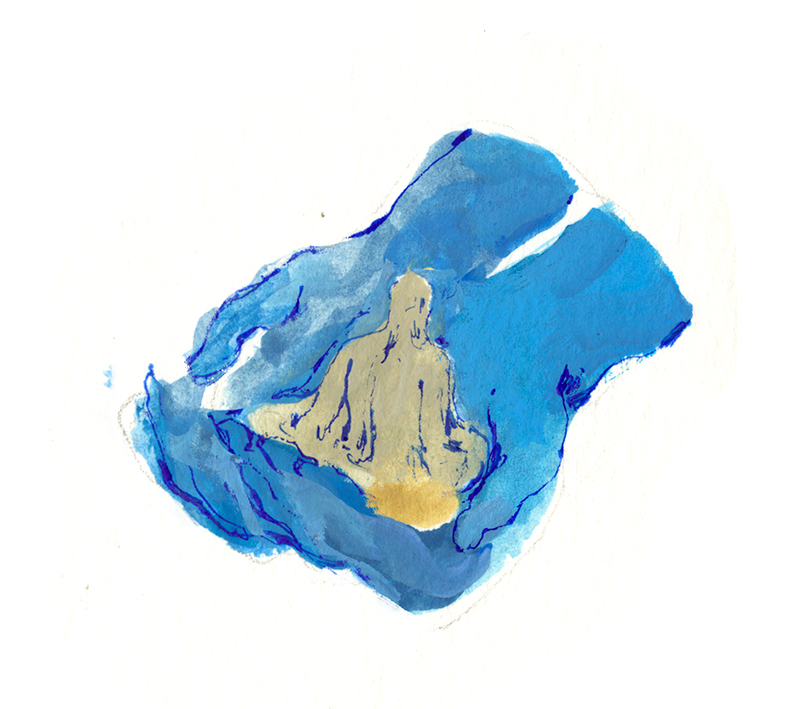
We are intertwined with each other—and we are derived, not from some distant source, but from each other.
It is overwhelmingly taken for granted that race is a “cultural construct,” an illusion, and not real—having no real basis in nature and having been discredited by scientific insights into genetics.9 This way of thinking about and working through race contests the biological determinism that has been deployed over time in the form of chattel slavery, state-funded apartheid, and the ways women are relegated to subhuman status. The story of race seems to be entirely about human actors and their awful policies. This story also informs a view of racial justice that seems blind to the effects of the world “around” us while focused exclusively on racial categories made possible by an oppressive global order. A story about getting even, about the social essences of being black versus being white—a never-ending dialectic of victimhood and privilege.
It seems that in the effort to untether ourselves from our prison-bodies, we have stopped seeing biology altogether.10 It seems we are now floating adrift in a postmodern virtual-semantic anything-goes space, a place charged with a shared distrust of authority and the messiness of our material bodies—one which encourages many people to insist that “they do not see color” or that they are “against race,” as if by force of will we could erase the world’s materiality and the marks on our bodies. To put this in another way, race seems caught in an eternal argument between biological essentialism and social essentialism, where the former argues that there is only one (biological) foundation about what we are, and the latter contests that claim by resisting any grounding whatsoever. The former treats bodies, nature, and matter as dead mechanical things; the latter makes the same gesture by relegating bodies to the lower rung of things, elevating culture over and above the world around us.
But ideas and the ideas that counter them are of the same framework. What both of these positions overlook is the vitality and aliveness of the material world. In more recent years, the idea that nature is alive, vibrant, and emergent has undermined attempts to lionize culture as the only source of agency on the planet and generated “new materialisms” that prioritize the self-organizing capacities of matter. The lines in the sand are being redrawn, and we are learning not only of how mind-like nature is, but how animal-like humans are. From plants that communicate with each other and instigate behaviors in other species to research-conducting orcas, the story of human exceptionalism is growing silent.
The world is not servile and patient and amenable to our representations of it; it resists, transforms, interrupts, and moves. Many times in ways that cannot be anticipated or boxed in—hence its monstrosity. Obatálá shows up here again: it’s almost as if he comes between the biological and the social—making matter more mind-like and mind more matter-like, hybridizing “both” of them—so that in this epoch of porous boundaries, our bodies cannot be considered apart from the stories we tell of them.
Embedding racial discourse within a vibrant material world that is threaded through with intelligence and agency redefines it. Within this more-than-human world—one in which agency is not confined to separate entities called “humans” but is differentially shared in specific ecosystems of being—race and racism become matters of not only human activity, but also environments, contexts, geological processes, bacterial activity, and more.
In other words, race (and racism) is not the unilateral by-product of human activity, even though we have told the story of race in a way that implies this. Feminist scholar Xin Liu notes that “the relegation of race to the domain of the cultural cannot adequately account for—and challenge—the tenacity of racism.”11 That’s a striking point to make: if race were illusory (a fabrication) and racism simply a matter of bad human attitudes within our control, then one might wonder why we haven’t just switched it off. A quick answer to that would be: we can’t switch racism off, because the attitudes, behavioral patterns, and social structures we associate with it are within the world at large, not domiciled within any form of politics or educational process we can invent. Humans are post-human. That is, we are not individuals, alone, independent or static; humans are aspects of intra-connecting systems and contexts. Assemblages.
As such, the “racist” is not the individual, but the specific assemblage that is the condition for the “individual’s” emergence. Efforts to reduce racism to the human “individual” do not take account of what the world is doing, and consequently reinforce a dualism that leaves humans independent of the world that makes them possible. We must think of the territory as having changed so much that “old” precepts no longer apply. This might mean we turn our gaze to the idea that identity is not an attribute of persons, but a shared strategy that links environments, humans, and nonhumans in material webs. It might suggest we look closer into research demonstrating that bacteria can pass on memory to descendants, or that trauma is an intergenerational phenomenon linking ancestors to their children in chains that disturb the idea that we are in charge of our selves. It might invite us not only to examine the material practices of economy-making that render specific communities invisible, but also how certain foods and the bacterial communities that eat them in our guts sustain racialization and engender temperaments.12
The material world also contributes to racialization; that is, how bodies become embodied is a complex matter involving nonhuman phenomena. Race is not an exclusively human matter. It is post-human, more-than-human. Bodies are constantly being racialized by forces that are biological and cultural simultaneously. Or biocultural. A single virus can crack open political economies, rearranging food systems and distribution networks that privilege some above others, emphasizing differences between populations, while downplaying significant deviations within populations. Think of how the Ebola phenomenon reinforced stereotypes about dirty Africans and their diseased bodies.
Race is not constructed or illusory. Race is not an invention. Race is not an essence codified in our bodies, predetermined and resolute. Race does not even have inherently stable meanings, but is a biocultural phenomenon that is ongoing, emergent, and dynamic. Race speaks to the ways bodies are racialized or arranged/stabilized according to fluid criteria that might involve phenotype at one “moment” and proximity to food sources in another scenario. A materialist account of race emancipates it from the orbit of discourse alone, and resituates racism and racialization in a thick web where we learn to notice the intersecting contributions of other beings and agencies to our ongoing embodiment.
Shifting away from the exclusivity of human actors allows us to notice not just nonhuman contributions to the making and remaking of the planet, but the embeddedness of so-called human actors in “webs of dependencies and relations with myriad other forms of matter … that shape our everyday experiences.”13
The emerging story of race in the Anthropocene draws our attention to the wildness of our bodies. The overriding theme of the Anthropocene—touch—radically resituates our bodies in terms of their dependence on, and entanglement with, other bodies. We are not only in touch with other bodies, it is their ongoing touching that is the condition for our survival—and survival is the currency of the Anthropocene. In a sense, there is a horizontality that connects me to you in ways that break apart the racialized gilded categories that centralize human operators.
This is how newer genetic technologies rethink heredity, race, and ancestry. Set against theories of racial polyphyleticism, new technologies are revealing what I would like to call the “transversality of the flesh” or transraciality. I employ the term “transraciality” to suggest that the lines have been crossed, and that the monster sits at the crossroads and dirt tracks, messing up progress, crosshatching the neatness of things, blurring the edges, belching shimmering boundaries, making us porous, and challenging our ideas of purity.
Transversality is a mathematical notion that names the intersection of spaces. Transversal lines disturb parallel lines; they penetrate, breakthrough, strikethrough, tear apart, pull asunder, re-configure, surprise, and rearrange. Transversality queers nature. Just like monsters. And attending to monsters—or, indeed, tending to the monstrous—opens up cracks in the order of things through which new systems might be glimpsed.
Black feminist scholar Alexander Weheliye, in his book Habeas Viscus, goes so far as to urge his readers to pause in their attempts to gain access and be included in the privileged stratospheres of white modernity—not only because the violence of inclusion modifies the bodies of the excluded, but mainly because equality is hardly ever achieved. Racism persists in spite of well-intentioned laws and policies. The end of apartheid may have pulled down the “White Only” signboards in South Africa, but the architecture of segregation has taken on other nuances.
Perhaps the kinds of justices enabled by our present precarious entanglements are the ones that invite an appreciation of transraciality. Maybe there’s more to our work than “healing the racial divide” or trying to get even. Maybe in winning we grant the game permission to be. I think transraciality concerns itself with acknowledging our messy legacies, convening a gathering of the manifold, working in a way that leads to the explicitation of the Many. Maybe there’s a kind of work that wants us to notice the contours of our bodies, and stop dead in our tracks. Like coming across a monster. Maybe there are other genres of the human; maybe we must come to accept that there are no guarantees of easy homecomings or static justice, and that all we can acknowledge are these many creaturely actions in a fragile ongoing world.
In many iterations of Obatálá’s story, he returns to the heavens after creating the earth and the life that lives on it. But it is also said that he remained on earth, relaxing outside his modest home in Ilé-Ifè, the land of Yoruba people. Some say he often stretched his old body on a creaky chair under the sun, his feet savoring the grit of sand, his big toe scratching the ground to reveal a worm slithering by, his smile widening as his children called his name from within his mud hut. I like this version best. I reckon that at many times during the day, the allure of convenient returns haunted him in the form of the chain that glistened, still fastened to a corner of the sky. I suspect he may have struggled with his decision—whether to transcend the grime or stay with the trouble of his monstrous others. And here—in this ambiguity, in this confusion, in this troubling betweenness that births beginnings and endings, at this haunting fork in the road where a distant moan cuts through the night—is where we must leave the story.
- There are deviations from this helix-shape format, as new DNA structures like the i-motif and G-quadruplex interrupt the orthodoxy of the helix structure.
- Miranda R. Waggoner and Tobias M. Uller, “Epigenetic Determinism in Science and Society,” New Genetics and Society 34, no. 2 (2015): 177–195, doi:10.1080/14636778.2015.1033052.
- Called the “Central Dogma,” the story is that bodies become themselves through a process in which DNA in the nucleus of cells convey their instructions via transcription into RNA, which in turn carries these instructions to be translated by amino acids in the cytoplasm of the cell. The amino acids form long chains called “polypeptides,” which fold into the end product of translation: proteins (which are fundamental to how our bodies turn out to be). So, in short, DNA –> RNA –> Proteins. As such, one’s personal genome sequencing (or genotype) comes to be expressed as physical characteristics (or phenotype). The Central Dogma does not allow for information to flow the other way, nor does it account for the myriad ways phenotype is co-produced by processes “outside” DNA (Carla Fehr, https://plato.stanford.edu/entries/feminist-philosophy-biology/).
- David Quammen, “The Scientist Who Scrambled Darwin’s Tree of Life.” New York Times, August 13, 2018, https://www.nytimes.com/2018/08/13/magazine/evolution-gene-microbiology.html?smprod=nytcore-ipad&smid=nytcore-ipad-share.
- And to the ethics of “getting even,” leveling blame on the distant “other,” and the sticky idea that we humans are in control.
- Jacques Derrida, “Passages—from Traumatism to Promise,” in Points …: Interviews, 1974–1994, ed. Elisabeth Weber, trans. Peggy Kamuf, et al (Stanford: Stanford University Press, 1995), 386–87.
- Specifically in the senses that author Alexander Weheliye writes about these matters.
- Andreas Hejnol, “Ladders, Trees, Complexity, and Other Metaphors,” in Arts of Living on a Damaged Planet, (eds.) Anna Tsing, Heather Swanson, Elaine Gan, Nils Bubandt (Minneapolis: University of Minnesota Press, 2017).
- Elizabeth Kolbert, “There’s No Scientific Basis for Race—It’s a Made-Up Label,” National Geographic Magazine, April, 2018, https://www.nationalgeographic.com/magazine/2018/04/race-genetics-science-africa/.
- Karen Barad, “Gender and Science: New Issues,” special issue, Signs 28, no. 3 (Spring 2003): pp. 801–831.
- Liu Xin, “Racial Excess: Rethinking How Race Comes to Matter,” Australian Feminist Studies 30, no. 86 (2015): 433–442, doi: 10.1080/08164649.2016.1148028.
- Melody Pupols, “Bacteria can pass on memory to descendants, researchers discover,” Science X, April 6, 2018, https://phys.org/news/2018-04-bacteria-memory-descendants.html; Lisa M. Christian, PhD, et al, “Gut microbiome composition is associated with temperament during early childhood,” https://www.ncbi.nlm.nih.gov/pmc/articles/PMC4342262/; Lei Chen, et al, “Gene expression profiling gut microbiota in different races of humans,” Scientific Reports, March 15, 2016 (online), https://www.nature.com/articles/srep23075.
- Diana Coole and Samantha Frost, New Materialisms: Ontology, Agency, and Politics (Durham, NC: Duke University Press, 2010).
